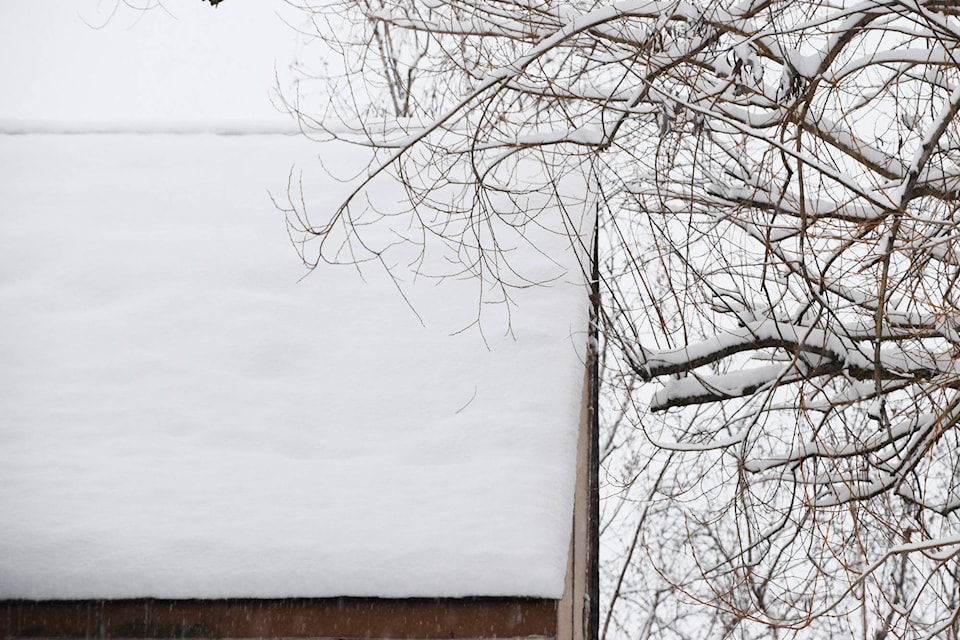As another storm lays into the Shuswap, concerns about roofs and their ability to handle the weight of accumulating snow and ice may be starting to grow.
With areas like Malakwa expecting up to 35 centimetres of snow by Sunday night, Jan. 12, questions over rooftop load-bearing abilities are not unfounded. In 2011, the Shuswap Emergency Program issued a public awareness advisory because in 2010, several roofs collapsed and, in one case, killed of some livestock.
Read more: PHOTOS: 2 homes collapse under heavy snow load in B.C.
Read more: Another Nakusp roof collapses under weight of snow
While full-sized homes have been known to collapse under heavy snow, Jason Penner, manager of Integrity Roofing, said residents living in trailers or modular homes may be more at risk.
“Some roofs are made bulletproof and others are just thrown together, and it’s hard to know by just looking at them,” Penner said. “If people are worried, it would be a good thing to get a professional to look at their trusses or the layout of the house.”
According to SEP advisory, a cubic foot of fresh snow can weigh seven pounds but old, compacted snow can weigh up to 30 pounds for the same volume. Rain falling on accumulated snow adds even more weight.
Read more: Another Nakusp roof collapses under weight of snow
Read more: In photos: Shuswap’s second winter storm buries cars and barricades residents
Concerned homeowners are advised to look for sagging, visually deformed, cracked or split wood members, doors that pop open and doors or windows that are difficult to open. Bowed utility pipes or conduits attached to the ceiling and creaking, cracking or popping sounds are also signs to look out for.
Ways to avoid roof damage altogether include keeping roof drains clear of ice and debris and performing regular inspections of your roof following severe storms.
@CameronJHT
Cameron.thomson@saobserver.net
Like us on Facebook and follow us on Twitter.
